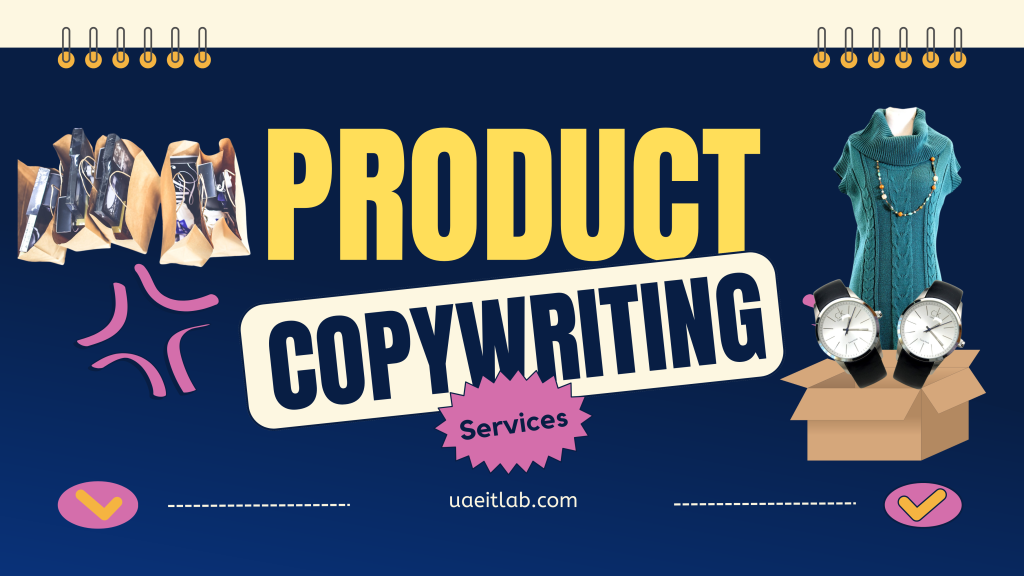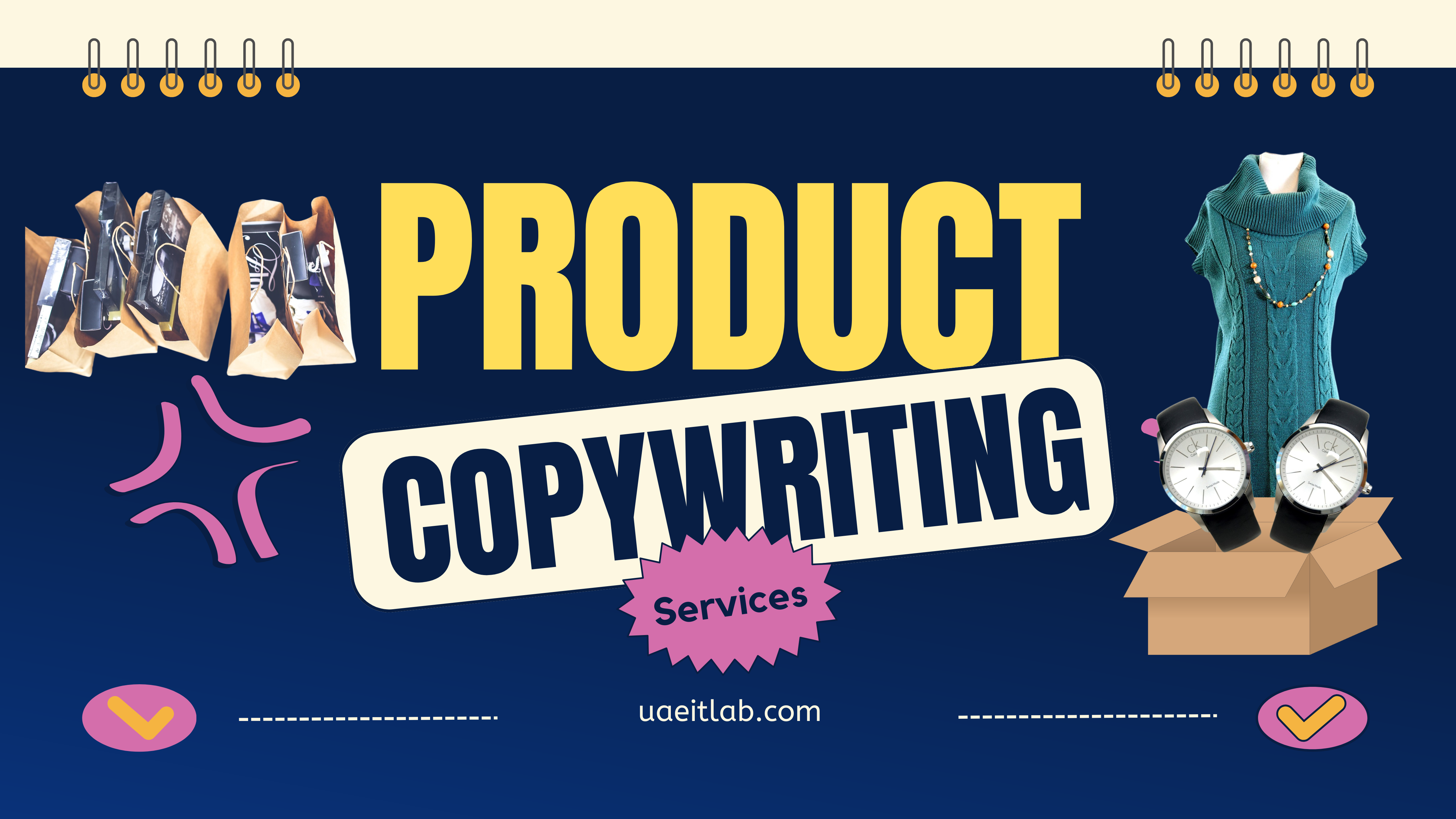The Art of Product Copywriting: How to Craft Words That Sell

In the world of e-commerce and digital marketing, product copywriting is the secret weapon that turns casual browsers into loyal customers. A well-written product description does more than just inform; it persuades, engages, and drives conversions. In this blog post, we’ll dive into what product copywriting is, why it’s crucial for your business, and proven techniques to craft compelling copy that sells.
What is Product Copywriting?
Product copywriting is the art of writing persuasive and engaging descriptions for products or services to encourage potential customers to make a purchase. It involves highlighting the benefits, features, and unique selling points (USPs) of a product in a way that resonates with the target audience. Unlike technical writing, product copywriting focuses more on emotions, benefits, and the buyer’s journey.
Why is Product Copywriting Important?
- Increases Conversions: Well-crafted copy can significantly boost sales by addressing customer pain points and desires.
- Builds Trust: Clear and honest descriptions build credibility and reduce return rates.
- Enhances SEO: Optimized product descriptions help improve search engine rankings and drive organic traffic.
- Reduces Cart Abandonment: Convincing copy can help overcome buyer hesitation, leading to fewer abandoned carts.
Key Elements of Effective Product Copywriting
1. Know Your Audience
Understanding your target audience is the first step. Ask yourself:
- Who are they? (Age, gender, location, preferences)
- What problems are they trying to solve?
- How can your product make their life easier or better?
The more you know about your audience, the easier it is to write copy that speaks directly to them.
2. Focus on Benefits, Not Just Features
Features describe the product, but benefits sell it. For example:
- Feature: Made from waterproof material.
- Benefit: Stay dry and comfortable, no matter the weather.
Focusing on benefits helps customers visualize how your product improves their lives.
3. Create an Irresistible Hook
The first few sentences of your product description should grab attention instantly.
- Example: “Tired of shoes that pinch and blister? Our ultra-cushion sneakers feel like walking on clouds.”
An effective hook addresses a problem and presents your product as the solution.
4. Use Persuasive Language and Power Words
Incorporate power words like exclusive, guaranteed, proven, effortless, limited-time to trigger emotions and urgency.
- Example: “Unlock flawless skin in just 7 days with our dermatologist-proven serum!”
Such words help create a sense of exclusivity and urgency.
5. Leverage Social Proof
Including testimonials, reviews, and case studies enhances credibility.
- Example: “Over 5,000 happy customers can’t be wrong! See why everyone loves our organic skincare line.”
Social proof builds trust and reduces the perceived risk of buying.
6. SEO Optimization for Product Copywriting
To drive organic traffic, include:
- Primary keywords: Main terms users search for (e.g., “wireless earbuds”).
- Long-tail keywords: Specific phrases (e.g., “best wireless earbuds for running”).
- Meta descriptions: Concise summaries with keywords to improve click-through rates.
A well-optimized product copy improves both visibility and relevance on search engines.
Product Copywriting Formulas That Work
1. AIDA (Attention, Interest, Desire, Action)
- Attention: Grab interest with a strong headline.
- Interest: Highlight benefits and solve a pain point.
- Desire: Use persuasive language to create a need.
- Action: Include a clear and compelling CTA (Call to Action).
- Example: “Tired of tangled headphones? Our wireless earbuds offer crystal-clear sound and freedom to move. Order now and enjoy hassle-free music!”
2. PAS (Problem, Agitation, Solution)
- Problem: Identify a pain point.
- Agitation: Amplify the discomfort it causes.
- Solution: Present your product as the fix.
- Example: “Hate running out of battery on the go? With our portable power bank, stay charged and connected all day!”
Common Mistakes to Avoid in Product Copywriting
- Focusing Only on Features: Remember, benefits drive sales.
- Using Complex Language: Keep it simple and relatable.
- Generic Descriptions: Avoid clichés like “best quality” without backing them up.
- Lack of Social Proof: Reviews and testimonials boost credibility.
Examples of Killer Product Copywriting
- Apple: “Powerful. Colorful. Wonderful.” (MacBook)
- Why it works: Simple, direct, and focuses on benefits.
- Dollar Shave Club: “A great shave for a few bucks a month. No commitment. No BS.”
- Why it works: Conversational tone and addresses customer pain points.
The Role of Visuals in Product Copywriting
Images, videos, and infographics complement your product copy by:
- Showing product usage: Helps buyers visualize ownership.
- Highlighting features: Close-up shots for detailed insights.
- Building trust: Real photos and videos provide authenticity.
Case Study: How Effective Product Copy Increased Sales by 200%
- Brand: XYZ Fitness
- Challenge: Low conversion rates due to generic product descriptions.
- Solution: Revamped copy focusing on benefits, urgency, and social proof.
- Results:
- Sales: Increased by 200% within three months.
- Bounce Rate: Decreased by 25%.
- Average Order Value: Grew by 30%.
Conclusion: Invest in Professional Product Copywriting
Compelling product copywriting is a critical part of any successful marketing strategy. By focusing on benefits, using persuasive language, and optimizing for SEO, you can turn product descriptions into powerful sales tools. Whether you’re launching a new product or optimizing an existing one, investing in professional copywriting is a step toward higher conversions and long-term growth.
Ready to transform your product descriptions? Contact us today for expert product copywriting services!

